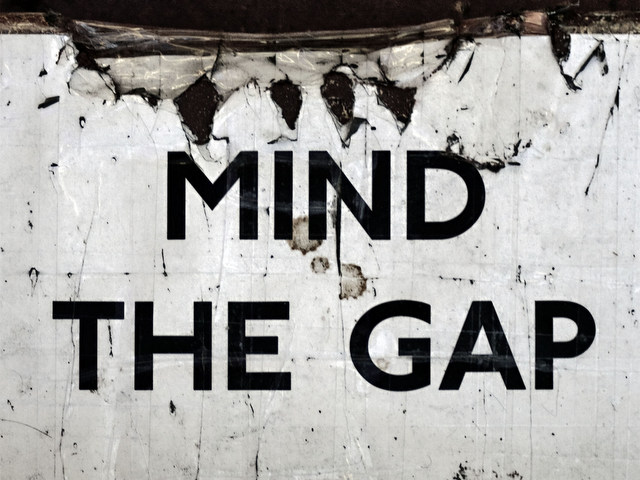In the wake of Black Friday and with Christmas just around the corner, Canadian consumers are enjoying lower prices as a result of increasing competition within the retail landscape. The holiday season is in full swing and the sales that can’t be missed are emblazoned on every store front window. All the stores are jockeying for your hard earned money but even with the illusion of great savings, the cold hard truth sends a chill colder than -30 degrees Celsius: things are cheaper south of the border. Why are Canadians are paying more than Americans for exactly the same products?
How Bad is the US-Canada Price Gap?
A BMO Capital Financial Markets study conducted earlier this year compared US and Canadian prices of identical products to quantify the difference. The study showed there is an average price discrepancy of at least 10% over a broad variety of items. The difference was the highest for baby diapers and running shoes at 34% and 19%, respectively. Interestingly enough, the study concludes that the price gap has narrowed- down from an average of 14% in 2012- as the value of the Canadian dollar declines against that of the US dollar. Has the gap really been shrinking?
I did a quick comparison to see if this was the case. Keeping in line with similar categories as the BMO study, my random sampling of items resulted in more than double their numbers: an average price gap of 31%.
[table]
“”,Canada Price,U.S. Price,U.S. Price (in CA dollars),Price Gap
“”,(C$),(US$),(C$),””
Sealy Baby Posturpedic Mattress,$198,$84.47,$89.82,54.64%
Cuisinart DLC-2009CHB Food Processor,$284,$138.86,$147.66,48.01%
Frye Jet Engineer Boots,$869.64,$590,$627.37,27.86%
Ender’s Game Paperback Book,$9.49,$4.39,$4.67,50.81%
Canon 50mm f/1.4 Lens,$459,$399,$424.27,7.57%
J.Crew Men’s Cashmere Sweater,$342,$298,$316.88,7.35%
Michelin Defender Standard Touring All-Season,$128.75,$94,$99.95,22.37%
Google Nexus 7 Tablet 16GB,$249,$199,$211.6,15.02%
20 Piece Chicken McNuggets,$10,$5,$5.32,46.83%
“”,””,””,Average,31.16%[/table]
Reasons for the US-Canada Price Difference
After studying the US-Canadian price difference for eight months, the Senate Finance Committee reported that while tariffs on imports are a significant factor, they are not the only contributors to price differences. Country pricing, market size, and distribution costs are also contributing factors.
Custom tariffs
In 2010-2011, custom tariffs brought in a cool $3.6 billion in revenue for the government. The Senate Finance committee observed that wholesalers and retailers apply their margins on top of the tariff. This results in more expensive products for consumers and bigger profits for companies. The committee also noted that tariff rates for certain products exist for no other reason that the fact that they have never been challenged by free trade negotiations.
Country pricing
From the consumer perspective, nothing is more infuriating than country pricing. Country pricing is the practice where corporations or suppliers charge Canadian retailers up to 50% more than their US counterparts for identical items, simply because that is what the market can bear.
For example, when the American discount retailer Target made their way into Canada, I was expecting prices to be on par with US stores but was surprised to find that this was not the case. Target Canada president Tony Fisher indicated that Target Canada “built this business model to be successful in Canada”; prices were to be competitive with other Canadian stores and not with the U.S chain. In short, Target Canada is charging as much as Walmart in Canada instead of providing a differentiating value to maximize their earnings.
Market Size
As of 2012, the population of the US was around 314 million people compared to about 35 million in Canada (in terms of population, we’re smaller than the state of California with 38 million people). Less people buy less stuff. As a result of Canadian businesses buying less merchandise, they have less bargaining power; larger US operations with more buying clout lead to lower production cost and lower retail prices. We just have to face it, when it comes to potential profits for US companies, we’re just small beans.
Distribution/Labour Costs
A smaller population results in a smaller population density. Within the US there are 34.2 people per squared kilometer compared to 3.4 in Canada. Ultimately, this leads to an increase in the cost of moving goods around. Factor in the the higher cost of gas and the cost of labour (minimum wage in the US ranges from $7.29-$9.19 compared to $9.95-$11 in Canada), there is a much higher distribution cost on a per-item basis in Canada.
The Cold Hard Truth
To the Americans, we’re just a huge barren wasteland filled with beavers and igloos. There isn’t much that the government can do in the way of changing the economies of scale; the only thing within their control is the reduction of tariffs (but I wouldn’t hold my breath for that). In the meantime, we’ll take advantage of the 30% “discount” and shop south of the border whenever it makes sense. Mayhaps we’ll meet at McDonald’s for them McNuggets.
Do you take advantage of the south of the border “discount”?
Photograph Source: Mark McClellan wallpaper





Great post. I can’t count the number of times my friends and I have a conversation about why the prices in the US are *so* much cheaper even while our dollar is almost on par! I guess there’s just much more to the equation than our currency value.
All that being said, there are American companies out there that are willing to do the honourable (I guess it’s “honorable” to them) thing and price their items the same whether in the US or Canada. I know Coach is one of them. And I have a feeling their gesture has seen a little more spending from me…
On another note, when is the Google Chromecast going to come to Canada??? The only way to purchase it for a Christmas gift this year is to order from the US with a hefty shipping cost. booo…
Currency value throws a wrench into the equation with far reaching implications, but it’s true; I’d be drawn towards a company trying to do honourable thing. Frankly, it would be a great PR move, create brand reliability and likely generate more long term sales. It’s like when J.Crew first came to Canada. Their online pricing generated quite the fury because of the difference. In the end they had to bring it back down in line with expectations. Target is no exception and so far they’re only Zellers with a new paint job.
Ditto. I’d snap up a Chromecast if it were in Canada. With the newly supported Plex streaming capabilities, you can turn any old monitor into a full fledged media center. That’d be a great stocking stuffer. Want!
Don’t forget taxes. 13% here versus 5% or whatever piddly amount they charge in the U.S. also counts for something.
Oh and free shipping and returns? That’s like a standard now in the U.S. versus Canada where they charge you at least $10.
At Williams-Sonoma we are looking at the Vitamix, and it’s $629 as the list price, but is automatically $100 off in the U.S…. and bupkiss here. Full list price. No deal.
Total scam.
Ugh so true! I always forget about the taxes and shipping. At least some places will let you return in store but you still need to take the time to line up. Hopefully, like everything else, we just end up copying the States and the practice makes its way into our system. Ever consider shipping to the border? We’ve done it a handful of times and make a day trip out of it to visit the outlets and the cheesecake factory.
This is a very explicit but concise post – thank you for it. I shop/visit the US a few times a year but I never bought big /expensive things. Even with small stuff, the savings are obvious. In regards to the exchange rate, I stumbled upon Amazon.ca chase credit card. They are nice enough to charge only the exchange rate and no other top up fees ( we have an Mbna master card that adds i think 2.5% on top of the exchange and scotia momentum visa that does the same). No promo here, just happy I found it. @save spend splurge – Costco has sometimes the Vitamix , but you have to find out where and when – not all the time and not online ( if I am not mistaken). Sorry – a bit off topic…
The credit cards we use also charge the 2.5% rate “convenience” fee on top of the exchange rate. I’ve debated getting a new credit card just for travel that doesn’t add the top up fee but I’m on the fence since our travel rewards card generates a 2% return. That being said, I still lose out on the 0.5%.
I just got the amazon(Chase) visa a few months ago. I plan to continue using a combination of mbna/ amexcostco in canada, and the chase( amazon) for US dollars purchases. I bought airplane tickets directly from us airlines – jetblue, americanairlines – and the savings were negated by the 2.5% add on. 🙁 But a travel rewards card also gives you travel insurance no? Something to consider. Between my 2 cards we got rebates last year of about $450 – 500 from Mbna and $130 Amex plus 140 rebate from Costco. I don’t know if it’s good or average. We spend about 2000 – 3000/month on credit cards ( we put everything on them , including travel expenses) and we pay them off at the end of the month, religiously. 🙂 But to be honest I’d rather spend less than get rewards!
It looks like you’ve got a great system working for you. I’ve also been considering the Amex just for Costco purchases but just have never pulled the trigger. That’s right, we usually make our travel purchases on the travel rewards card for the added benefits including travel insurance. We spend a similar amount on a monthly basis (also all on the credit card, religiously paid off at month end). We pull in around $700 in rewards; good or not, it seems to be on par. Think we can petition them to offer more rewards for less money spent? 🙂
I totally sympathise – we pay a premium for EVERYTHING here in NZ. Unfortunately we can’t just pop over the border to get cheaper prices! When we went into Canada after a week in the US we complained a lot about things costing more … but by comparison everything was still dirt cheap for us.
How much more expensive are things in NZ in terms of a %? Are there options for ordering online or does shipping always kill the deal? Maybe walnuts will be cheaper. I hear James Cameron is setting up a farm.